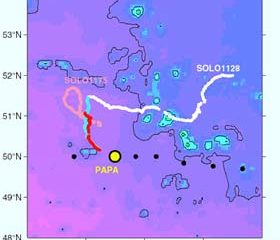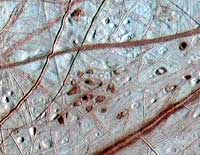NASA scientists using satellite data have shown that shifts in rainfall patterns from one of the strongest El Niño events of the century in 1997 to a La Niña event in 2000 significantly changed vegetation patterns over Africa.
Assaf Anyamba and Compton Tucker of NASA’s Goddard Space Flight Center, Greenbelt Md., and Robert Mahoney of Global Science and Technology Inc (GST) analyzed satellite derived images of vegetation from 1997 to 2000. They noticed regions of above normal “greenness” ov
Populations of marine fish may lose genetic diversity even if fishing stops while there are still several million individuals – a number previously assumed to be enough to preserve a diverse gene pool.
Losing the diversity of key genes can render a population less productive and unable to adapt when faced with challenges such as global warming, pollution or changes in predators or prey. Rare genetic variation of little importance today might be the key to adaptability in the future, accordin
A recent study of coral formations in different tropical locations will be used to help geologists reconstruct climate and storm patterns of the past and learn more about the preservation of reefs. The findings will be presented by David Meyer, University of Cincinnati professor of geology, at the upcoming 2002 meeting and exposition of the Geological Society of America.
Meyer’s previous research established that coral reefs can be an index of the ocean’s health and are greatly impacted by
What constrained the evolution of life during the very hot early Earth? Was a simple drop in temperature largely responsible for the emergence of cyanobacteria, a large and varied group of bacteria with chlorophyll that carry out photosynthesis in the presence of light and air with concomitant production of oxygen? Was it a reduction in carbon-dioxide levels?
Geochemist David Schwartzman of Howard University and Ken Caldeira of the Climate and Carbon Cycle Group at Lawrence Livermore Nation

Robotic Carbon Explorers test the “iron hypothesis” in nature
In the spring of 2001, two robotic Carbon Explorer floats recorded the rapid growth of phytoplankton in the upper layers of the North Pacific Ocean after a passing storm had deposited iron-rich dust from the Gobi Desert. The carbon measurements, reported in the October 25 issue of Science, are the first direct observation of wind-blown terrestrial dust fertilizing the growth of aquatic plant life.
A group of scie

The oozing of glacial material in the floating ice shell on Jupiter’s moon Europa has important implications for future exploration of the enigmatic moon and prospects of life in its ice-covered ocean, according to a University of Colorado at Boulder professor.
Robert Pappalardo, an assistant professor in the astrophysical and planetary sciences department and one of the world’s foremost Europa experts, said the icy moon is believed to contain an ocean some 13 miles under its icy